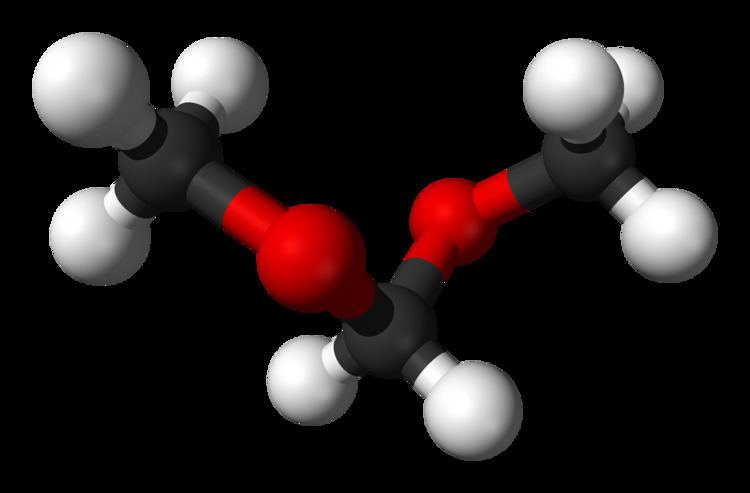Appearance Colorless liquid Density 860 kg/m³ | Formula C3H8O2 | |
 | ||
What does dimethoxymethane mean
Dimethoxymethane, also called methylal, is a colorless flammable liquid with a low boiling point, low viscosity and excellent dissolving power. It has a chloroform-like odor and a pungent taste. It is the dimethyl acetal of formaldehyde. Dimethoxymethane is soluble in three parts water and miscible with most common organic solvents.
Contents
- What does dimethoxymethane mean
- Synthesis and structure
- Applications
- Reagent in organic synthesis
- References
Synthesis and structure
It can be manufactured by oxidation of methanol or by the reaction of formaldehyde with methanol. In aqueous acid, it is hydrolyzed back to formaldehyde and methanol.
Due to the anomeric effect, dimethoxymethane has a preference toward the gauche conformation around the C–O bonds, instead of the anti conformation. Since it is one of the smallest molecules exhibiting this effect, which has great interest in carbohydrate chemistry, dimethoxymethane is often used for theoretical studies of the anomeric effect.
Applications
Industrially, it is primarily used as a solvent and in the manufacture of perfumes, resins, adhesives, paint strippers and protective coatings. Another application is as a gasoline-additive for increasing octane number.
Reagent in organic synthesis
Another useful application of dimethoxymethane is to protect alcohols with a MOM ether in organic synthesis. This can be done using phosphorus pentoxide in dry dichloromethane or chloroform. This is a preferred method to using MOM-Cl. The MOM-ether can be removed using methanol in the presence of p-toluenesulfonic acid as an alternative to aqueous acid.
